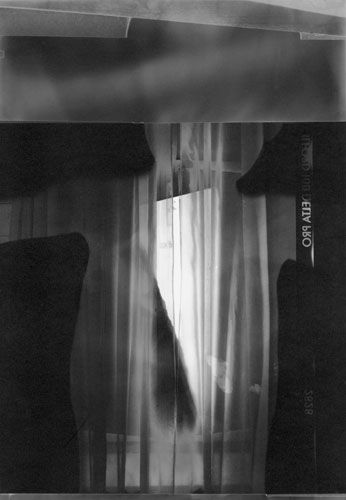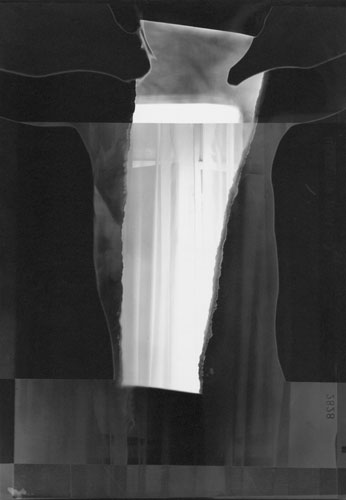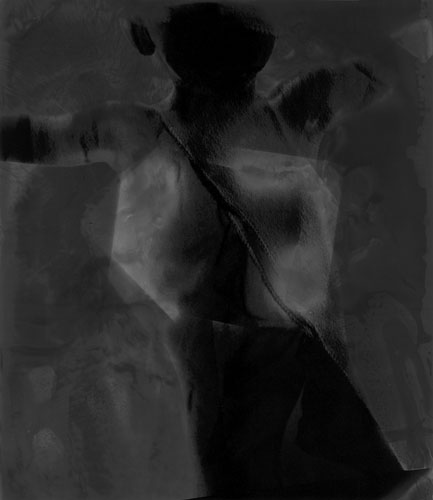

Manifestations of Light
The image, including the photographic image - in the epistemological meaning of the term - is a cognitive and sensual entity which plays the part of a transparent mediator of all objects in the act of perception, while such an act is an intentional reaction of the subject to the object. In this case the image is to be understood as a way in which a concrete object is given in our perception, imagination and memory. It is obvious for Treppa that the human mind possesses the ability of presenting images to itself and that those images are representations of something that symbolizes something else (this statement is also true of words, sentences and thoughts). Therefore, on the basis of similarity (which is a symmetrical and reflexive relation), the image constitutes a reference to a concrete object that refers to itself or - being the representation of something - it symbolizes something completely different. That is so because to believe that the surface of the object in the picture resembles what it represents is something completely different than to grasp what is represented in the image and what we experience as viewers on the basis of similarity between the image and the two-dimensional object which the picture actually is. The fact that images represent everything to which they are similar means that the explanation of representation has to do with interpretation, not similarity, and therefore the image itself is associated with an infinite number of presented contexts. Thus in photography conceived as a branch of art the internally experienced sense of reality that demands external manifestation (the image) is creatively fulfilled when it transforms the creation of the image and the technical means of its registration into expressive means that serve to express the idea of the image adequately, instrumentalizing them at the same time. Watching Treppa’s photographs we come to realize that the idea of the image is not to be found in the physical phenomenon or technology which rationalizes it, but in the mind of the artist, as it is he who makes his ideas objective and provides them with the function of a formula. The synthetic and clear-cut construction of the images whose composition is based on a triangle or a square in which a human figure is inscribed, sometimes playing the role of a graphically simplified sign, mystically connects the Earth with Heaven/God and becomes its primary, fundamental and - most of all - magical meaning that the author uses to unfold his own story which lacks the beginning and end as of this moment and brings unexpected interpretative spaces with it. The sense of those photographs can be reduced to a combination of self-meaningful, pure notions of realities that are different ontologically - the centre versus the outside, the horizontal division of the plane versus verticalities, the object versus the space in which the object is situated - and to formal opposites, like light and darkness. The compositional clarity of the structural elements of the image conceived in its final stages of expression gives the impression of a multi-layered reality, characterized by a rich tonal span. Even at the first, overpowering look we can clearly see all the elements that form the structure of those images. Their style - which is very important - is easily recognizable (anthropomorphic shapes, curtains, holes, passages) and we immediately feel the need to visually enter the image again. The viewer intuitively feels that the truth of those images is hidden somewhere underneath the surface of their successively perceived layers, the layers of matter and light - the light which gives matter spiritual character. Light is omnipotent in those works - it brings objects out of the dark and materializes, but also dematerializes them, and finally manifests itself as an individual quality or feature . The journey into the abyss of those images turns out to be a journey into the abyss of their meanings. As the artist proves in his work, it turns out that the feeling of the phenomenon of sacrum is no longer possible in the situation of semantic chaos or excess; that is why forms and symbolic qualities are of the greatest significance here. That is because symbolic senses are connected with all the layers of the image and put together they refer to designatum proper - the ideal feature or quality, belonging to what transgresses the reality of the work itself - and they cannot be reduced to the one mode of existence which is the intentional existence of the image. Therefore the possibility of experiencing the quality of sacrum can be found beyond the structure of a work of art, in the world of pure ideas, under one important condition: namely that an artist when creating his work does his duty first of all to form, and only later to content - which also takes its vitality from form.
The form of the works presented here, as the author himself has often stressed, is modelled on the so-called Sabatier effect, frequently used also in the works of Man Ray. We cannot be sure whether Man Ray operated directly on "the plate" (Czartoryska) or on photographic paper in a positive darkroom. We might rather suppose that in this case we have to do with a certain generalization where "the plate" might simply mean any kind of light-sensitive material. Strictly speaking, when light falls on negative light-sensitive material during the process of developing photographs we ought to call this phenomenon "solarization" - and "pseudosolarization" when, as in the case of Sabatier’s effect, light affects positive material. All the same, both processes give similar results, although obviously the images produced by both these means are reversed tonally with respect to each other. The only other important difference is the fact that Sabatier’s effect on photographic paper - i.e. in the course of the "positive" process - allows us greater control over the end result. On paper the end product is a monotype, of course, which can be copied only be means of reproducing (scanning) the original.
As we can easily guess, Zbigniew Treppa prefers this kind of operation which gives him greater control over the process of production of a work of art. While Sabatier’s effect gives the author only partial control over the degree to which an image obtained earlier may be erased with the use of light, looking at Treppa’s works we probably cannot doubt that the author is quite consciously trying to "save" certain fragments of the image as he wants them to become meaningful in this way. In some of his works we can follow this process to a certain degree. For example we can clearly see that the use of the process of solarization was a kind of a full stop that crowned the whole process of a realization whose origins may be found, naturally, in the primary idea, the concept that had come into being first, even before the author started to take photographs.
One might add that there were several crucial elements taken into account during the realization of these works. The first one, as I have just said, can be identified as the original idea of the work, and the others would be the selection of motifs and the act of photographying itself when such dramatic essentials as lighting, perspective, the size of the location, etc. are resolved. No less important seems to be the decision as to what ingredients, i.e. what negatives and in what kind of mutual configuration should make up the image that is later exposed to light in the above-mentioned process of solarization. In many cases the author uses three or four negatives which he places one on top of the other, using the so-called "sandwich" technique. We can easily guess that the criterion of selection of particular negatives was the saving of the "brilliance" of the image which in its "factographical" layer has been gradually erased due to the obliteration of details and various "white noise" interferences.
We might also add that the author personally accentuates especially two thoughts that seem important to him. The first one may be summed up as follows: the process of solarization illustrates problems which are absolutely crucial in photography. Naturally, we are speaking here about photography based on traditional techniques, i.e. on light-sensitive silver compounds and photochemistry. Sabatier’s effect - i.e., solarization - cannot be achieved even partially when digital photography is used or when traditional photographic material is modified using computers and computer software.
The second thought concerns the solarization of the photographs of reality. Here in the end we can look at a given object or at its "physicality" from a new perspective, because we deprive it of its materiality, producing in turn an image which generalizes the object and allows us to enter the sphere of a symbol. Obviously whether we have to do with an image is also determined to the same degree by a motif that is reduced to a sign. An example of this in the author’s opinion is, for instance, the figure of a man with his arms spread out.
Zbigniew Treppa seems to prove in his work that a work of art is not what it represents. It functions imitatively, exists only seemingly (des seienden Scheins, H.-G. Gadamer) and becomes a specific means of communication. The undefined sacrum which is a sanctifying quality and at the same time the manifestation of sacredness is also a sphere of communication that is unusual enough to escape our perception. However, sacrum in Treppa’s photographs is not something that opposes reality - it is rather a sphere that transgresses discourse. It is in confrontation with this phenomenon that we come across the question of the limits of being and the limits of our cognitive powers - the question whether our cognitive powers reach as far as being itself or whether reality in at least one of its aspects is completely inaccessible by way of human experience and reasoning. However, in this case we cannot count on ever arriving at a scientifically valid answer as we have no grounds on which to formulate an opinion on the matter or provide an answer to the question whether anything exists beyond the limits of our knowledge.
Andrzej P. Bator
Translation Maciej Świerkocki



Next exhibition
4.04.2008
Copyright ©2008 Galeria FF ŁDK, Zbigniew Treppa, Andrzej P. Bator